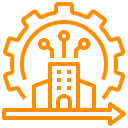
About Me
I am a results-driven Lean Six Sigma Black Belt and Business Process Engineer with extensive experience in optimizing operations and driving organizational excellence. With a proven track record of delivering measurable improvements across industries, I specialize in streamlining processes, enhancing efficiency, and fostering innovation to achieve strategic goals.
Over my career, I’ve worked closely with diverse teams to identify pain points, implement data-driven solutions, and create sustainable change. Whether leading large-scale projects, facilitating workshops, or managing cross-functional initiatives, my focus is always on delivering value and building systems that empower success.
Services
I have the capability and experience to work with Public sector and Private sector clients. I have experience working with various insurance clients, credit unions, banking clients, and the broad network of the healthcare industry.

Localized lean improvement consulting Services
(small project focus)

Value Stream improvement consulting Services
(improving systems from customer need to need being met)

Organization wide improvement consulting Services
(changing the performance and culture of an entire organization)

Extended enterprise improvement consulting services
(improving a system of product and service delivery that crosses between organizations)

Strategic Planning & Training Services
- Lean Six Sigma training and certification
- Public workshops on a variety of lean improvement topics
- Workshop and keynote speaking on lean improvement

Frequently Asked Questions
While there are some up-front expenses in infrastructure and training/capability building, the long-range cost impact of improving your organization should be zero. As wasted time and activity is eliminated, resources and capacity are created, and the cost of errors and defects is dramatically reduced. Throughput increases, which minimizes capital costs. Also, inventories are reduced, generating cash to grow your organization. Making positive impact in the areas of staff engagement, quality, lead-time and cost will generate a favorable return on your investment.
Absolutely! However, that might not be the best approach. W. Edward Deming, the quality expert, had a saying: ”Doing your best is not good enough. You first must know what to do, then do your best.” Most organizations benefit greatly from some infrastructure creation prior to “jumping in”. I have the experience to guide you through the correct amount of infrastructure depending on the size of your project. For example, infrastructure can include establishing a steering committee, training your internal experts, developing the best strategic approach to your goals, and/or creating your “measure, capture and results” system.
Readiness is a mindset. I work with large and small companies, for-profit and not-for-profit organizations, union and non-union organizations, and public and private corporations. Organizations that succeed share a common thread: engaging the people to do the work to relentlessly seek out and eliminate wasteful activity. I believe that everyone has the capability to improve, but that not everyone has the desire.
As a result, although improvement can be created from the bottom up, it must be led from the top down. Commitment from the leadership of your organization is a requirement for long-term success.
In the long term, we hope to create a culture where everyone is involved in the process of seeing and eliminating waste. In the initial phase of improvement, the staff engagement will vary based on the frequency and depth of the improvement areas of focus. Each activity requires a different number of resources. Please contact us for more specific projections of your staffing needs.
As a result, although improvement can be created from the bottom up, it must be led from the top down. Commitment from the leadership of your organization is a requirement for long-term success.
Self-sufficiency is a goal of all organizations. Self-sufficiency is required for an organization to commit to creating its own business system, consisting of tools and approaches that, when combined, enable continuous improvement of both performance and culture. Every organization has different timeline for self-sufficiency; however, the organizations that approach self-sufficiency share a few key benchmarks:
- A number of internal experts have been developed
- Tools, process, resources, and an improvement strategy to support continuous process improvement are firmly in place
- Management can demonstrate correct behavior and use of tools
- Management trusts the tools and uses a ”Lean” solution in lieu of traditional approaches to problem-solving
- Results are sustained and the organization can budget for and expect year over year improvement
As a result, although improvement can be created from the bottom up, it must be led from the top down. Commitment from the leadership of your organization is a requirement for long-term success.

